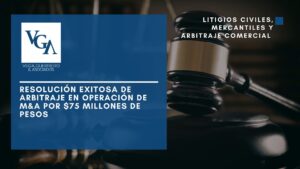The economic crisis triggered by the COVID-19 pandemic continues to have a significant impact on the Mexican economy, with one of the notable effects being the phenomenon of inflation. In response to this situation, central banks, including the Bank of Mexico, have opted to raise interest rates in order to control inflation, which has had a negative impact on debt-laden companies. In this context, the Commercial bankruptcy emerges as a legal strategy that provides protection and restructuring opportunities for companies affected by the increase in interest rates.
The increase in interest rates, while beneficial for savers by offering positive real interest rates, can generate financial difficulties for companies with debts. These organizations must allocate a larger portion of their resources to cover interest payments, which negatively affects their financial stability and ability to conduct business activities optimally.
Given this problem, Commercial bankruptcy positions itself as a valuable legal tool for debt-laden companies facing financial difficulties due to the rise in interest rates. This legal procedure allows companies in insolvency to seek protection and debt restructuring, providing them with an appropriate legal framework to negotiate with creditors and seek solutions to overcome the economic crisis.
Commercial bankruptcy offers a range of advantages and benefits for companies in this situation. Firstly, it grants a suspension of execution and collection procedures by creditors, providing the company with a respite to evaluate its financial situation and plan a recovery strategy thoroughly. Additionally, Commercial bankruptcy allows for the possibility of renegotiating debt terms, including reducing interest rates and extending payment deadlines, in order to adapt them to the company’s economic reality and ensure long-term viability.
It is essential to emphasize that Commercial bankruptcy benefits not only the indebted company but also the involved creditors. Through this procedure, the objective is to establish equitable agreements that enable the company’s recovery while protecting the interests of creditors. This contributes to financial stability, job preservation, and economic reactivation in the business environment.
In the current context of the pandemic, where the increase in interest rates poses a challenge for debt-laden companies, Commercial bankruptcy stands as an effective legal strategy to confront this situation. By providing protection and restructuring opportunities, this procedure enables affected companies to negotiate with their creditors and seek solutions that promote their financial recovery.




